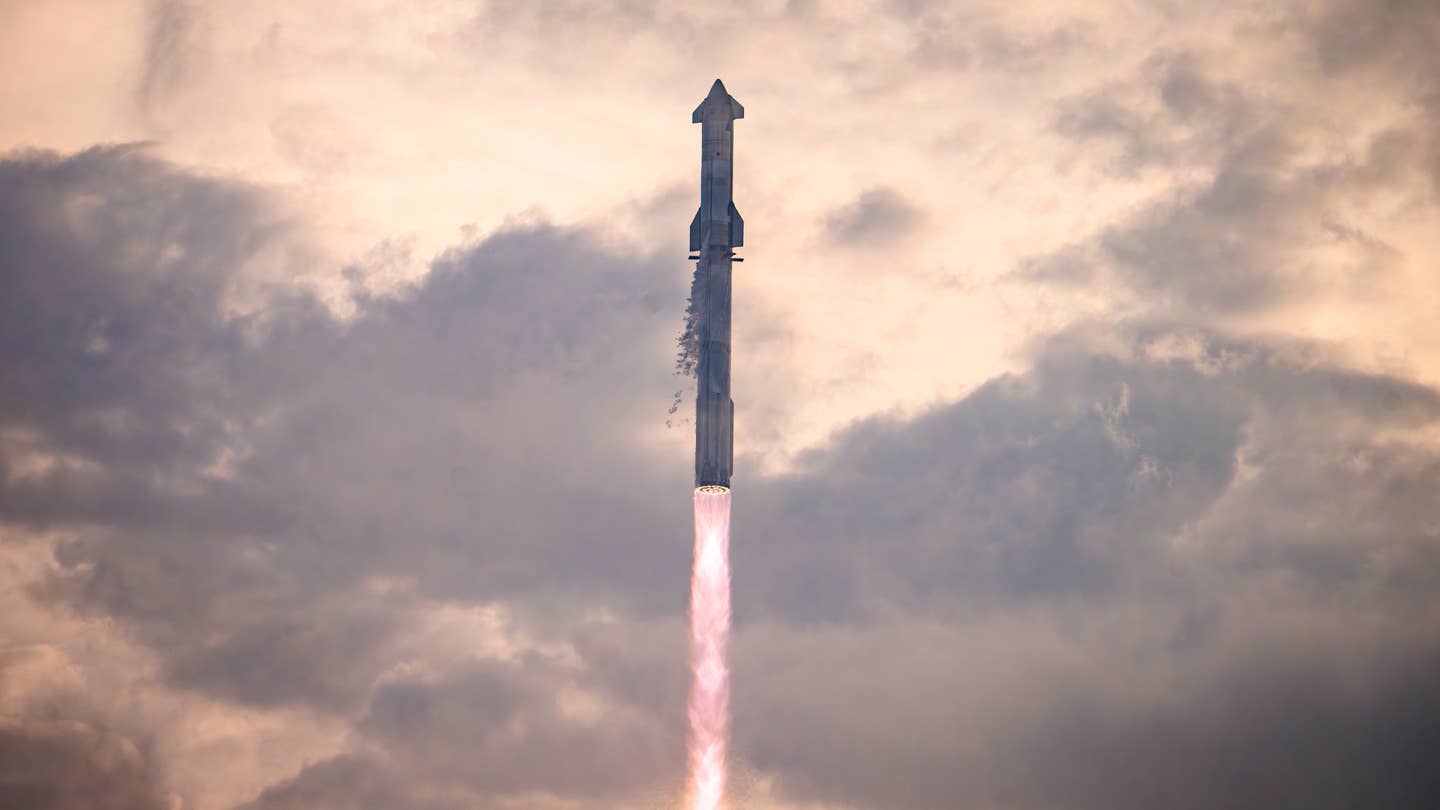SpaceX Starship Grounded Again
The FAA begins a third mishap investigation into SpaceX’s Starship rocket and Super Heavy booster, which were lost during a test Thursday.

SpaceX’s Starship rocket and Super Heavy booster lift off from the launch pad in Boca Chica, Texas, on Thursday. [Courtesy: SpaceX]
In what feels increasingly like a bout of déjà vu, SpaceX’s Starship—the largest and most powerful rocket ever flown—has been grounded again.
The FAA on Thursday initiated its third mishap investigation into Starship after the 400-foot-tall spacecraft and booster were lost during its third orbital test flight. Both components are intended to be reusable.
Starship will remain grounded until the FAA concludes its investigation and awards a fresh launch license. However, Thursday’s flight undoubtedly built on previous Starship missions, during which the rocket and booster exploded minutes after takeoff. This time around, they flew halfway around the planet.
Starship stands taller than the Statue of Liberty and on Thursday generated nearly twice the thrust of NASA’s Space Launch System, which owned the previous record. Orbital test flights are intended to evaluate the spacecraft’s capabilities for NASA Artemis moon missions, which aim to return humans to the lunar surface for the first time in half a century.
Starship and the Super Heavy booster lifted off Thursday morning from Starbase, SpaceX’s launch pad in Boca Chica, Texas. The spacecraft generated 16 million pounds of thrust from 33 Raptor engines, the most ever in a rocket booster.
Unlike past attempts, Thursday’s mission, OT-3, traveled nearly halfway around the Earth as intended. For the first time, Starship reached space. But when the rocket reentered the atmosphere about 45 minutes into the mission, SpaceX lost communications. The company later said the vehicle did not survive reentry. Starship was intended to splash down in the Indian Ocean, and the booster in the Gulf of Mexico.
However, while not fully completed, the mission was vastly more successful than previous flights. Starship for the first time demonstrated the ability to reach orbital speeds and open its payload door—which could one day deploy Starlink satellites and other cargo—during flight.
Another crucial feat was a liquid oxygen transfer between two tanks, part of a NASA tipping-point demonstration and a key capability for missions to the moon and beyond.
A SpaceX representative estimated the company will need to complete 10 refueling missions before its Starship Human Landing System (HLS)—the capsule that will transport astronauts to the moon during Artemis III—can land on the lunar surface. The representative did not convey how many orbital test flights will be required, but Starship will need to complete at least one mission in full before moving to the next phase.
With three orbital test flights under Starship’s belt, SpaceX CEO Elon Musk on Tuesday predicted the rocket will complete six more this year—an unprecedented number for a new super heavy lift rocket.
Though the flight undoubtedly builds upon Starship’s previous missions, the FAA will nevertheless investigate the loss of communications, which it said affected both the rocket and booster.
A mishap investigation is standard whenever a launch does not go according to plan. The goal is to determine the root cause of the event and identify corrective actions to keep it from happening again.
The regulator said it would be involved in every step of the process. It will need to approve SpaceX’s final report, including any corrective actions the company intends to take, before a license can be reissued.
“A return to flight is based on the FAA determining that any system, process, or procedure related to the mishap does not affect public safety,” the agency said. “In addition, SpaceX may need to modify its license to incorporate any corrective actions and meet all other licensing requirements.”
No public injuries or property damage were reported from OT-3, the FAA said. That was not the case during Starship’s first test flight, which damaged buildings and sent plumes of ash and debris flying miles away.
The investigation into that incident closed within seven months, and the agency’s second inquiry was completed in just three months. Since Thursday’s test was far more successful than the previous two, and no injuries or damage were reported, the investigation timeline may be on the shorter side.
Accidents are not particularly uncommon for spacecraft. In fact, a Japanese rocket called Kairos and a Chinese model called Yuanzheng-1S both suffered anomalies this week. But the delays caused by Starship investigations may have implications for the Artemis missions.
NASA Administrator Bill Nelson congratulated SpaceX on Thursday’s test flight. But with Americans’ return to the moon aboard Artemis III now delayed to 2026, the agency will be expecting a usable Starship HLS by then. Jim Free, associate administrator of NASA, predicted vehicle’s development may take more time than previously thought.
Musk, meanwhile, has touted Starship as a ferry to Mars, envisioning trips to the Red Planet carrying hundreds of humans at a time. Those ambitions will depend on SpaceX ironing out the kinks with the 400-foot-tall rocket and booster.
Like this story? We think you'll also like the Future of FLYING newsletter sent every Thursday afternoon. Sign up now.

Subscribe to Our Newsletter
Get the latest FLYING stories delivered directly to your inbox






